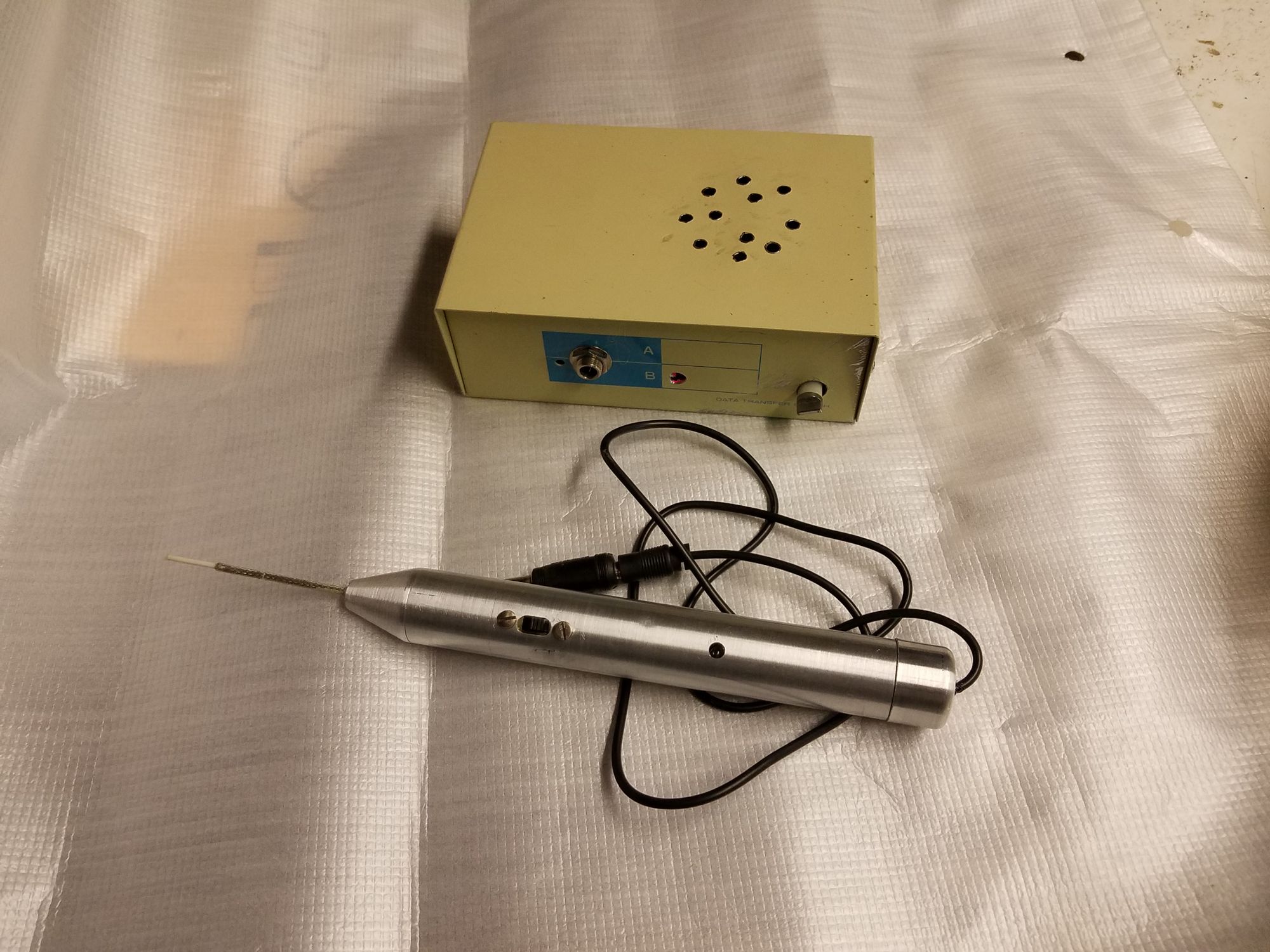AHRS Project
RickeDee Super Probe
Submitted by Dee Haynes
A few months ago, I was watching Mr. Carlson’s Lab, one of my favorite electronic repair blogs on YouTube. He was building an electronic probe for troubleshooting radios.
https://www.youtube.com/watch?v=uVkJqqZroN0&t=1915s
As I watched, I thought “Gaaaaaa-Leee” this probe thing has to be the best thing since sliced bread. I’ve got to have one. Meanwhile, back at the ranch, Rick Curl, another AHRS member, was working with a program called “Diptrace”. After that, things kinda’ came together. I talked with Rick and we decided to use Diptrace to design the circuit board for the Mr. Carlson’s Super Probe. As covered in a previous Superflex newsletter, Diptrace is a program that allows you to click and drag components and design a circuit board on your computer. For me, at the tender age of 76, the learning curve for this program is a bit steep. Over a period of several weeks, Rick and I designed the board on my desktop computer with my 42 inch monitor (great for designing circuit boards). He clicked and dragged, poked and prodded and then mashed the proper button and “voila”, there is the circuit board all laid out on the computer screen and ready to order. Click another button and a company in China printed this board out and shipped it to me, sans Covid-19.

Tiny isn’t it. There are 6 transistors, an LED, multiple caps and resistors all on a board that is about the same width as a dime. To make things simple electronically, one of the transistors drives the LED and the rest are a series of amplifiers strung together. In other words, this is a very sensitive amplifier that works both with RF and AF. (I have a pacemaker and I can put the probe near it and could hear the ticks being driven by my heart beat)
Meanwhile back at the build. Heaven forbid if I had to solder those components on that tiny board. Thank goodness Rick volunteered to do that job too.

Here we see Rick trouble shooting the board with his super nice, Hantek 60 MHz test set, which has many functions including an oscilloscope, signal generator, and multi-meter among other things. I think it will even make chicken soup if you mash the right buttons.
Thanks Rick for all you help in making this circuit board. Now all I have to do is make a metal container for the probe and a separate power supply and audio amplifier.
Here I am facing a piece of aluminum on my bench lathe for one of the two end caps which will house the probe. The aluminum tube which would contain the probe came from a folding chair. I’ve been saving that old chair for 30 years and finally found a use for it.

.
Enough of tooting my own horn, here is the finished product. If any of you AHRS members are interested in building one of these Super Probes, let me know. We have a few extra boards that need populating. Just get in touch with me. K4hfx1@gmail.com. This would make a nice club electronics class project.

Rick wanted me to say a few more words about the design of the circuit board and the Diptrace program. Here is a shot of the three dimensional view of the board.

You can even rotate the view in any direction including seeing the back of the board.
Here is a shot of the layout of the board that was sent to the manufacturer for production. Not shown is the back of the board which is mostly covered with copper and a few traces. Leaving the extra copper in place is a wise move because it helps shield the board, which is extremely sensitive.

Well folks, I think that about covers it. I am still learning how to use the Super Probe. It might need a few minor adjustments, but I tried it out on an All American Five today and it picks up just about everything that Mr. Carlson of "Mr. Carlson's Laboratory” said it would. Again, we ordered extra boards if anyone is interested in building one of these things. Contact me if you wish to give it a try,
See you on Zoom.
Dee